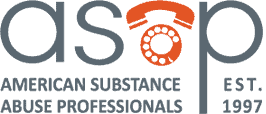By: Eric Miller, Senior Reporter (Transport Topics)
It has been more than six years since Congress mandated that the Department of Health and Human Services adopt a drug testing rule allowing the use of hair samples to drug-test drivers and other federal safety-sensitive employees.
Can the long wait now be coming to an end?
The latest prediction, according to the chairman of a federal drug testing advisory board, is that if all goes as planned, the rule will be finalized by midsummer.
But all hasn’t really gone as planned, at least so far. Although the federal drug board has been busy crafting the rule since it was first mandated by Congress in December 2015, HHS has been facing challenge after challenge. The most recent controversy came in 2020, when the agency’s proposed hair testing rule received harsh criticism from the trucking industry because it required positive drug hair-test results to be verified by a subsequent urinalysis test.
Now the draft of the final rule — discussed in a closed meeting last month by members of the Substance Abuse and Mental Health Services Administration’s Drug Testing Advisory Board — is again being reviewed by HHS but still faces review and approval by the White House Office of Management and Budget before it can be posted in the Federal Register, said Ron Flegel, chairman of the advisory board.
“I cannot speculate, but it was an agreed-upon timeline,” Flegel said.
SAMHSA is a subagency of HHS, the ultimate decision-making agency in charge of drug testing. The Drug Testing Advisory Board comprises mostly drug-testing lab executives.
“What I can say is that we have received comments back. Those comments have been revised, and they’re going back for HHS review,” Flegel said. “OMB is the final arbitrator of the mandatory guidelines. It’s under final review. If we adhere to the unified agenda date, then the public will see the revisions. I think I can say we’re on track.”
“We keep hearing that summer is the target date,” said Dan Horvath, vice president of safety policy for American Trucking Associations. “However, what remains to be seen, is if this will be a final rule or another round of proposed guidelines.”
“J.B. Hunt provided extensive guidance on the proposed rule by the Department of Health and Human Services that would establish guidelines for hair testing and allow it to be an alternative to urine and oral fluids testing for certain types of regulated tests,” said Greer Woodruff, senior vice president of corporate safety, security and driver personnel at J.B. Hunt. “The proposal is currently being reviewed by the Office of Management and Budget. We will continue to monitor its progress and anticipate the approved HHS guidelines to be released midsummer, hopefully with our recommendations incorporated.”
J.B. Hunt has been drug testing for many years, and reported that it has had good results with the use of hair samples. Hunt has claimed hair testing is an effective way to reveal lifestyle drug users.
J.B. Hunt ranks No. 4 on the Transport Topics Top 100 list of the largest for-hire carriers in North America.
“I don’t disagree this rule has been a tough one,” Flegel said. “The review has taken quite a while.”
But one wonders why some labs have been doing hair testing for years, but federal agencies have been slogging along to come up with a final rule to hair test drivers?
Flegel said there have been concerns about hair color bias, first raised in a lawsuit filed against the Boston Police Department.
Plus, the agency had to review hundreds of public comments, many of them “significant” about the need for the rule to be stand-alone.
Flegel said the drug advisory committee took those comments into account, but he declined to discuss specifics.
Public comments from the trucking industry were overwhelmingly negative regarding the September 2020 proposed rule, since it did not allow hair testing to be a “stand-alone” test. The proposed rule would permit carriers to test employees or prospective employees using hair samples, but positive test results would still need to be validated with a subsequent urine test.
SHARE:
ASAP has a nationwide reach in all 50 states and U.S. territories. Our trained and knowledgeable team will assist you in understanding the process and signing up. It’s fast and easy to enroll with ASAP! 888.792.2727 x607





